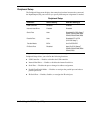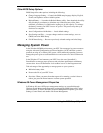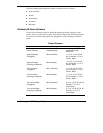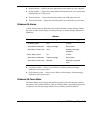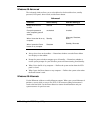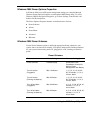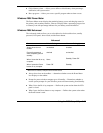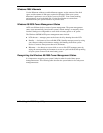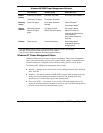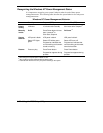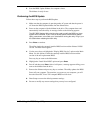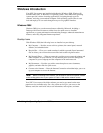
3-24
Using the BIOS Setup Utility
Windows 2000 Hibernate
Use the Hibernate window to enable hibernate support, see the amount of free disk
space, and the amount of disk space required to hibernate. When your system
hibernates it performs a save-to-disk or save-to-file (STF). Your current working
environment is saved to the hard disk. Use the Power button to resume from
hibernation and your system returns to its previous state.
Windows 98/2000 Power Management States
ACPI uses different levels or states of power management. The power management
states occur automatically, based on the system’s default settings, or manually, when
invoked. Settings are configurable to occur while on battery power or AC power.
The Windows 98/2000 ACPI power management states include:
!
LCD timeout — manages power at the lowest level by shutting down the LCD.
!
Standby — also known as Save-to-RAM (STR), Standby manages power by saving
your current working environment to memory and shutting down most system
devices. Conserves more power than an LCD timeout.
!
Hibernate — also known as save-to-disk, or save-to-file (STF) manages power by
saving the current working environment to an area on your hard disk, then powering
off your system. Conserves the most battery power.
Recognizing the Windows 98/2000 Power Management States
It is important to recognize your system’s behavior when in each of these power
management states. The following table describes the system behavior for each power
management state.



